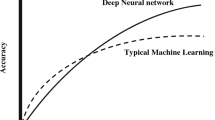Abstract
Neuromodulation is a biologically-inspired technique that can adapt the per-connection learning rates of synaptic plasticity. Neuromodulation has been used to facilitate unsupervised learning by adapting neural network weights. Multiobjective evolution of neural network topology and weights has been used to design neurocontrollers for autonomous robots. This paper presents a novel multiobjective evolutionary neurocontroller with unsupervised learning for robot navigation. Multiobjective evolution of network weights and topologies (NEAT-MODS) is augmented with neuromodulated learning. NEAT-MODS is an NSGA-II based multiobjective neurocontroller that uses two conflicting objectives. The first rewards the robot when it moves in a direct manner with minimal turning; the second objective is to reach as many targets as possible. NEAT-MODS uses speciation, a selection process that aims to ensure Pareto-optimal genotypic diversity and elitism. The effectiveness of the design is demonstrated using a series of experiments with a simulated robot traversing a simple maze containing target goals. It is shown that when neuromodulated learning is combined with multiobjective evolution, better-performing neural controllers are synthesized than by evolution alone. Secondly, it is demonstrated that speciation is unnecessary in neuromodulated neuroevolution, as neuromodulation preserves topological innovation. The proposed neuromodulated approach is found to be statistically superior to NEAT-MODS alone when applied to solve a multiobjective navigation problem.





















Similar content being viewed by others
References
Abramovich O, Moshaiov A (2016) Multi-objective topology and weight evolution of neuro-controllers. In: 2016 IEEE congress on evolutionary computation (CEC), pp 670–677. https://doi.org/10.1109/CEC.2016.7743857
Deb K (2001) Multi objective optimization using evolutionary algorithms. Wiley, New York
Deb K, Pratap A, Agarwal S, Meyarivan T (2002) A fast and elitist multiobjective genetic algorithm: NSGA-II. IEEE Trans Evol Comput 6(2):182–197. https://doi.org/10.1109/4235.996017
Doya K (2002) Metalearning and neuromodulation. Neural Netw 15(4–6):495–506. https://doi.org/10.1016/S0893-6080(02)00044-8
Floreano D, Dürr P, Mattiussi C (2008) Neuroevolution: from architectures to learning. Evol Intell 1(1):47–62. https://doi.org/10.1007/s12065-007-0002-4
Hebb DO (1949) The organization of behavior, a neuropsychological theory. Wiley, New York
Katz PS, Harris-Warrick RM (1999) The evolution of neuronal circuits underlying species-specific behavior. Curr Opin Neurobiol 9(5):628–633. https://doi.org/10.1016/S0959-4388(99)00012-4
Knowles JD, Watson RA, Corne DW (2001) Reducing local optima in single-objective problems by multi-objectivization. In: International conference on evolutionary multi-criterion optimization. Springer, pp 269–283
Mandziuk J, Rajkiewicz P (2016) Neuro-evolutionary system for FOREX trading. In: 2016 IEEE congress on evolutionary computation, CEC 2016, pp 4654–4661. https://doi.org/10.1109/CEC.2016.7744384
Nayak SC, Misra BB (2018) Estimating stock closing indices using a GA-weighted condensed polynomial neural network. Financial Innov 4(1):1–22. https://doi.org/10.1186/s40854-018-0104-2
Niv Y, Joel D, Meilijson I, Ruppin E (2002) Evolution of reinforcement learning in uncertain environments: a simple explanation for complex foraging behaviors. Adapt Behav 10(1):5–24. https://doi.org/10.1177/1059-712302-010001-01
Norouzzadeh MS, Clune J (2016) Neuromodulation improves the evolution of forward models. In: Proceedings of the 2016 on genetic and evolutionary computation conference—GECCO ’16, pp 157–164. https://doi.org/10.1145/2908812.2908837
Prados D, Kak S (1989) Neural network capacity using delta rule. Electron Lett 25(3):197–199. https://doi.org/10.1049/el:19890142
Reisinger J, Bahceci E, Karpov I, Miikkulainen R (2007) Coevolving strategies for general game playing. In: 2007 IEEE symposium on computational intelligence and games, pp 320–327. https://doi.org/10.1109/CIG.2007.368115
Richard K. Belew, McInerney J, Schraudolph NN (1991) Evolving networks: using the genetic algorithm with connectionist learning. In: Proceedings of the second artificial life conference, pp 511—-547
Showalter I, Schwartz HM (2004) A growing and pruning method for a history stack neural network based adaptive controller. In: Proceedings of the IEEE conference on decision and control, vol 5, pp 4946–4951. https://doi.org/10.1109/CDC.2004.1429590
Silva F, Urbano P, Christensen AL (2014) Online evolution of adaptive robot behaviour. IGI Global, Hershey, pp 59–77
Silva F, Urbano P, Oliveira S, Christensen AL (2012) odNEAT: an algorithm for distributed online, onboard evolution of robot behaviours. Artif Life 13:251–258. https://doi.org/10.7551/978-0-262-31050-5-ch034
Soltoggio A, Bullinaria JA, Mattiussi C, Dürr P, Floreano D (2008) Evolutionary advantages of neuromodulated plasticity in dynamic, reward-based scenarios. In: Artificial life XI: proceedings of the 11th international conference on simulation and synthesis of living systems (ALIFE 2008), vol 2, pp 569–576. https://doi.org/10.1016/S0269-7491(01)00278-0
Stanley KO, Bryant BD, Miikkulainen R (2005) Real-time learning in the NERO video game. IEEE Trans Evol Comput 9(6):653–668
Stanley KO, Miikkulainen R (2002) Evolving neural networks through augmenting topologies. Evol Comput 10(2):99–127. https://doi.org/10.1162/106365602320169811
Stanley KO, Miikkulainen R (2004) Competitive coevolution through evolutionary complexification. J Artif Intell Res 21:63–100. https://doi.org/10.1613/jair.1338
van Willigen W, Haasdijk E, Kester L (2013) A multi-objective approach to evolving platooning strategies in intelligent transportation systems. In: Proceeding of the fifteenth annual conference on Genetic and evolutionary computation conference—GECCO ’13. ACM Press, New York, NY, USA, pp 1397–1404. https://doi.org/10.1145/2463372.2463534
Author information
Authors and Affiliations
Corresponding author
Additional information
Publisher's Note
Springer Nature remains neutral with regard to jurisdictional claims in published maps and institutional affiliations.
Rights and permissions
About this article
Cite this article
Showalter, I., Schwartz, H.M. Neuromodulated multiobjective evolutionary neurocontrollers without speciation. Evol. Intel. 14, 1415–1430 (2021). https://doi.org/10.1007/s12065-020-00394-9
Received:
Revised:
Accepted:
Published:
Issue Date:
DOI: https://doi.org/10.1007/s12065-020-00394-9




